
Section 1: Company Overview and Fundamentals
1.1 Company Overview:
International Business Machines Corporation (NYSE: IBM) is engaged in addressing the hybrid cloud and artificial intelligence (AI) opportunity with a platform-centric approach, focused on providing client value through a combination of technology and business expertise. Its segments include Software, Consulting, Infrastructure and Financing.
Kalkine’s American Tech Report covers the Company Overview, Key positives & negatives, Investment summary, Key investment metrics, Top 10 shareholding, Business updates and insights into company recent financial results, Key Risks & Outlook, Price performance and technical summary, Target Price, and Recommendation on the stock.
Stock Performance:
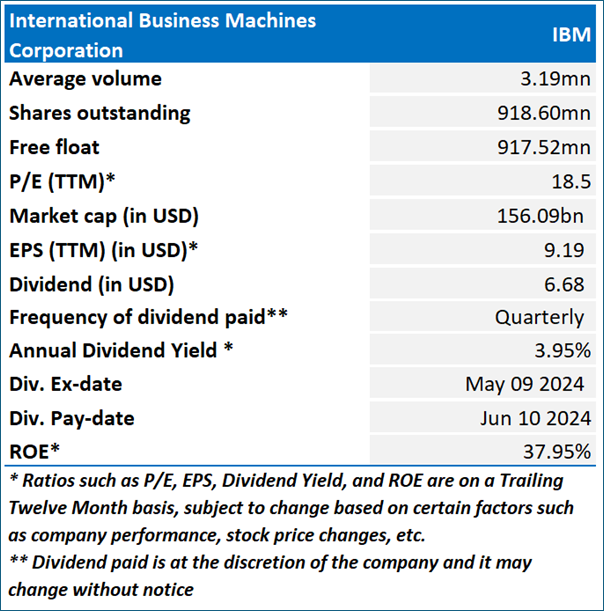
1.2 The Key Positives, Negatives, and Investment summary
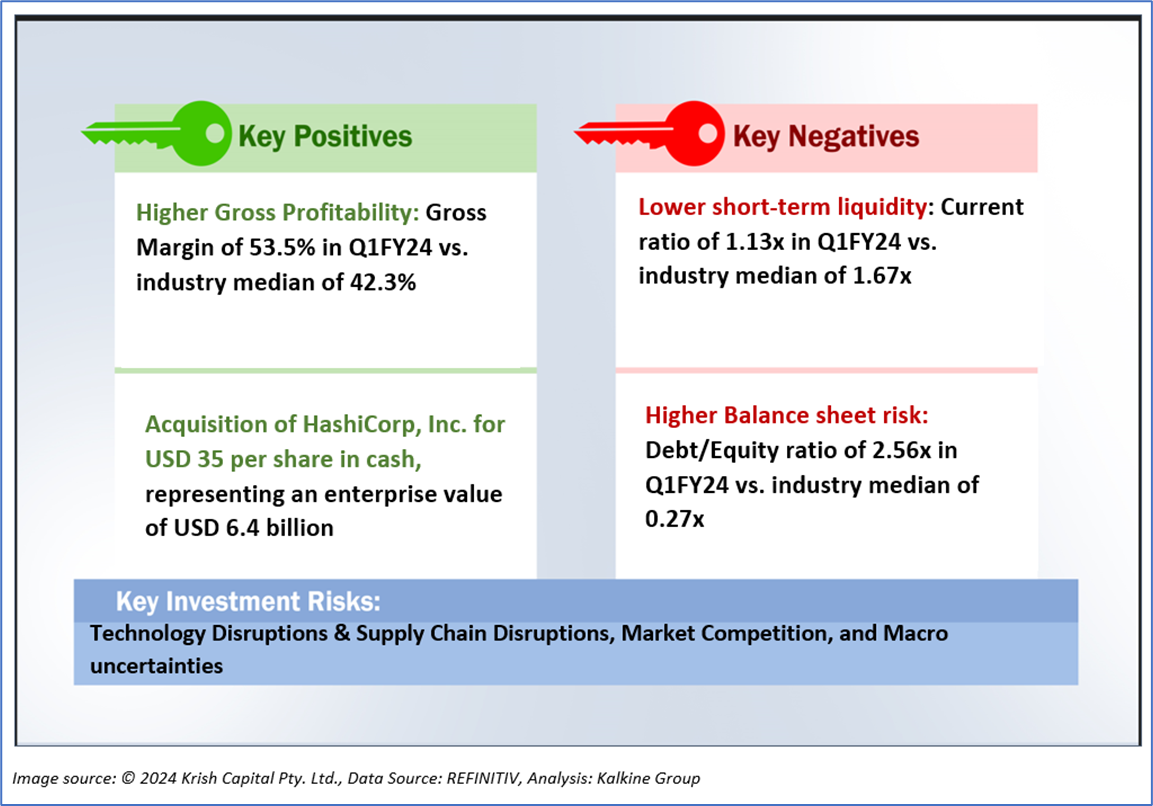

1.3 Top 10 shareholders:
The top 10 shareholders together form ~28.22% of the total shareholding, signifying diverse shareholding. The Vanguard Group, Inc. and State Street Global Advisors (US) are the biggest shareholders, holding the maximum stake in the company at ~9.56% and ~5.93%, respectively.
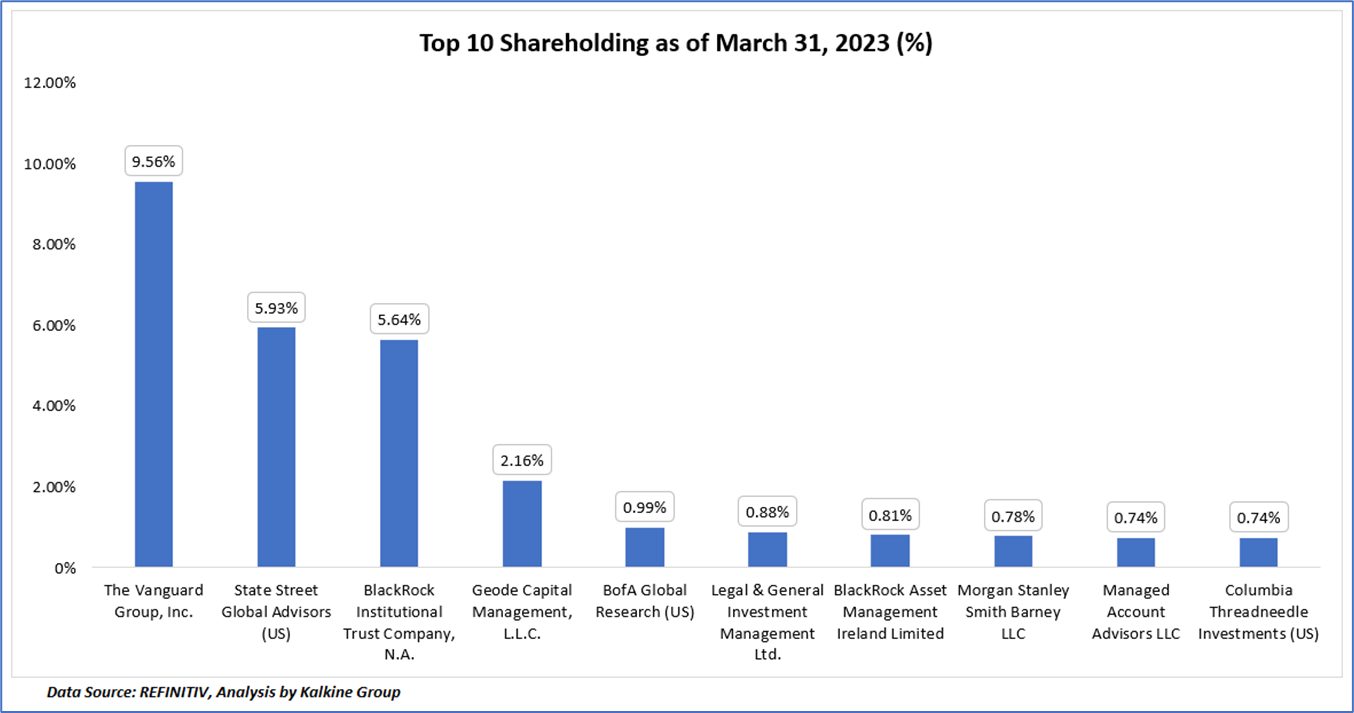
1.4 Key Metrics:
IBM demonstrates a remarkable financial performance in the first quarter of fiscal year 2024, surpassing industry benchmarks across key metrics. Notably, IBM's gross margin of 53.5% outshines the industry median of 42.3%, indicating superior profitability in core operations. Furthermore, with an EBITDA margin of 19.9% compared to the industry's 7.6%, IBM exhibits exceptional efficiency in generating earnings from operational activities. Operating margin also stands significantly higher at 7.4% against the industry's 2.9%, showcasing IBM's adeptness in managing operational costs and generating income. Additionally, IBM's net margin of 14.0% dwarfs the industry median of 2.5%, underscoring its ability to convert revenue into substantial net income after all expenses. These results collectively highlight IBM's robust financial position, emphasizing its competence in maximizing profitability and efficiency relative to industry peers.

Section 2: Business Updates and Corporate Business Highlights
2.1 Recent Updates:
The below picture gives an overview of the recent updates:
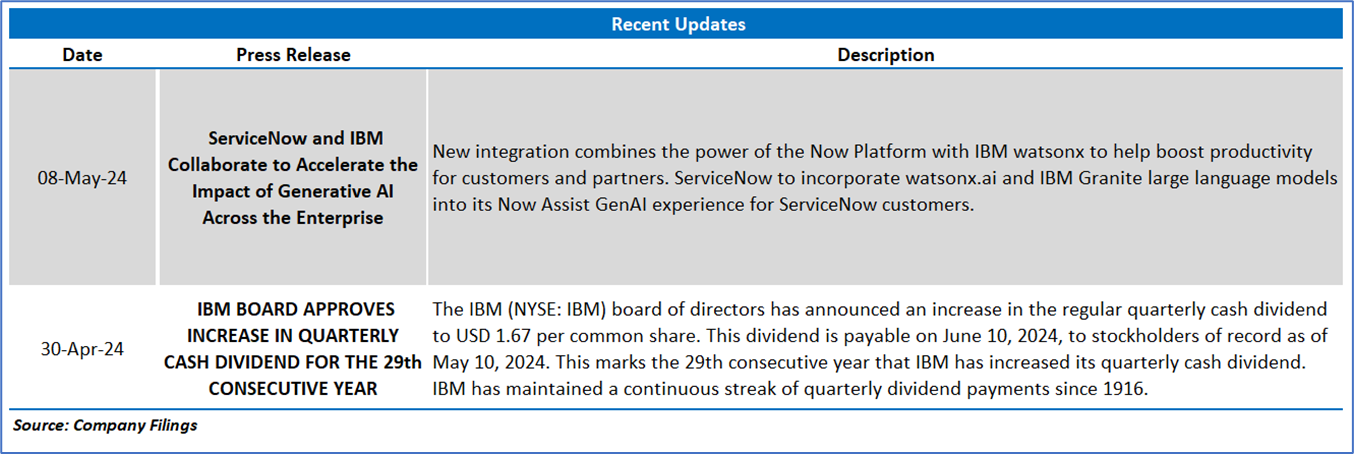
2.2 Insights of Q1FY24:

Section 3: Key Risks & Outlook
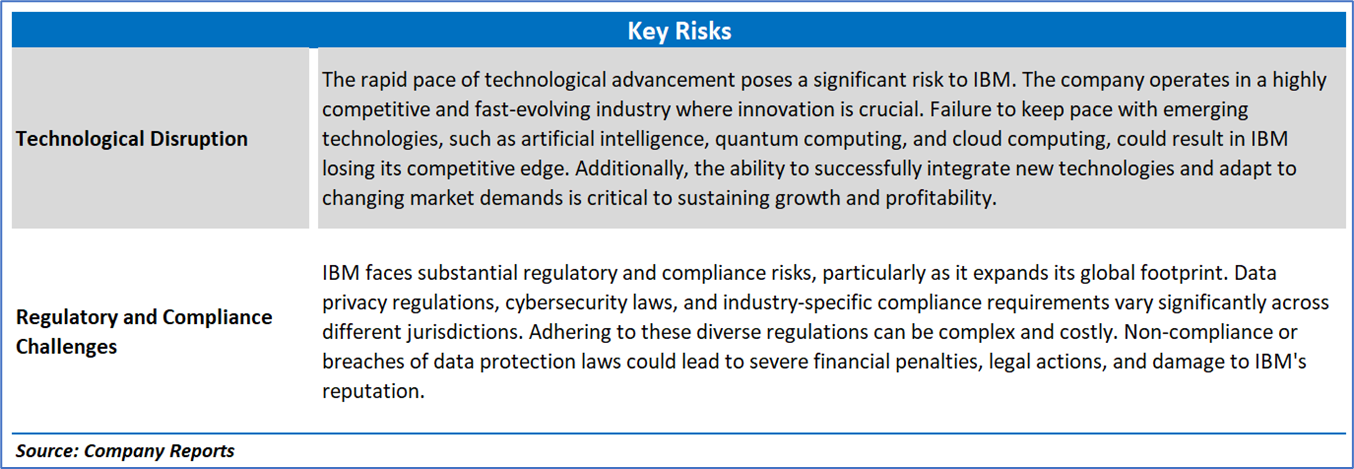

Section 4: Stock Recommendation Summary:
4.1 Price Performance and Technical Summary:
Stock Performance:
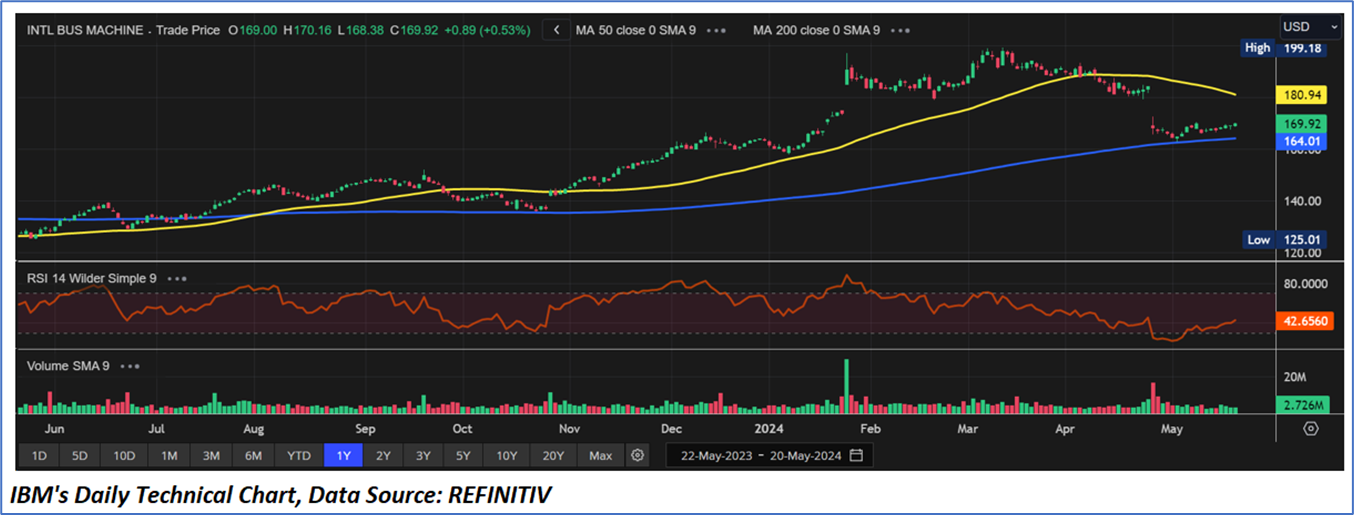

4.2 Fundamental Valuation
Valuation Methodology: Price/Earnings Per Share Multiple Based Relative Valuation

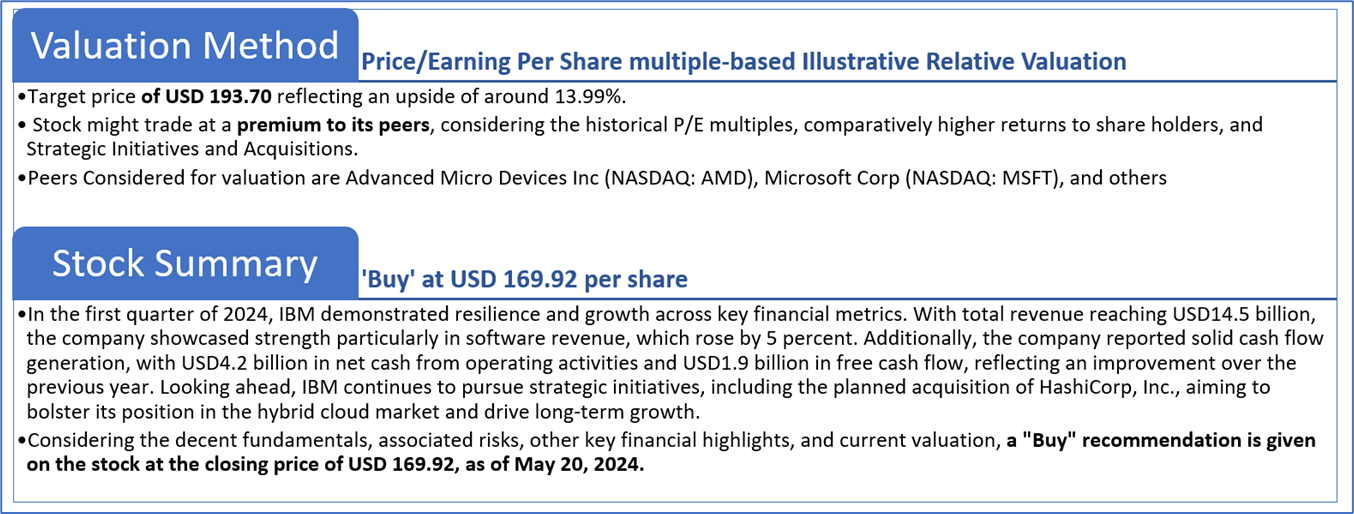
Markets are trading in a highly volatile zone currently due to certain macroeconomic issues and geopolitical tensions prevailing. Therefore, it is prudent to follow a cautious approach while investing.
Note 1: Past performance is not a reliable indicator of future performance.
Note 2: The reference date for all price data, currency, technical indicators, support, and resistance levels is May 20, 2024. The reference data in this report has been partly sourced from REFINITIV.
Note 3: Investment decisions should be made depending on an individual's appetite for upside potential, risks, holding duration, and any previous holdings. An 'Exit' from the stock can be considered if the Target Price mentioned as per the Valuation and or the technical levels provided has been achieved and is subject to the factors discussed above.
Note 4: The report publishing date is as per the Pacific Time Zone.
Technical Indicators Defined: -
Support: A level at which the stock prices tend to find support if they are falling, and a downtrend may take a pause backed by demand or buying interest. Support 1 refers to the nearby support level for the stock and if the price breaches the level, then Support 2 may act as the crucial support level for the stock.
Resistance: A level at which the stock prices tend to find resistance when they are rising, and an uptrend may take a pause due to profit booking or selling interest. Resistance 1 refers to the nearby resistance level for the stock and if the price surpasses the level, then Resistance 2 may act as the crucial resistance level for the stock.
Stop-loss: It is a level to protect against further losses in case of unfavorable movement in the stock prices.
The advice given by Kalkine Canada Advisory Services Inc. and provided on this website is general information only and it does not take into account your investment objectives, financial situation and the particular needs of any particular person. You should therefore consider whether the advice is appropriate to your investment objectives, financial situation and needs before acting upon it. You should seek advice from a financial adviser, stockbroker or other professional (including taxation and legal advice) as necessary before acting on any advice. Not all investments are appropriate for all people. The website www.kalkine.ca is published by Kalkine Canada Advisory Services Inc. The link to our Terms & Conditions has been provided please go through them. On the date of publishing this report (mentioned on the website), employees and/or associates of Kalkine do not hold positions in any of the stocks covered on the website. These stocks can change any time and readers of the reports should not consider these stocks as advice or recommendations later.